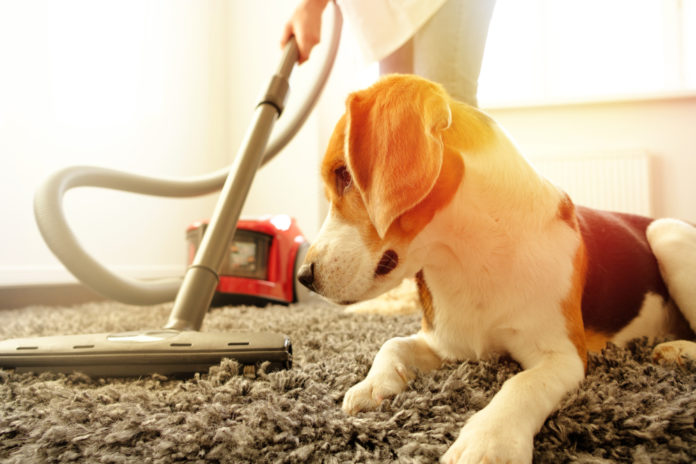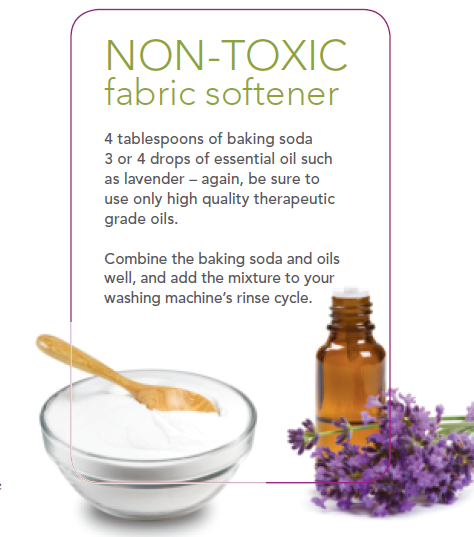6 hidden household toxins – protecting your pet

Minimizing your dog or cat’s exposure to harmful chemicals involves more than switching to non-toxic cleaners. Check out these six hidden household toxins, and what you can do about them.
One of the most important ways to help ensure your dog or cat enjoys a long and healthy life is to minimize his exposure to toxins in the home environment. Using natural cleaners is a great strategy, but it doesn’t end there. Harmful toxins can lurk in many other household products besides cleaners, and these chemicals can have a detrimental effect on both you and your animal companion. Find out what some of these toxins are and where they’re hiding — and how to protect your dog or cat.
1. Phthalates
What they are: Phthalates are a group of chemicals used to make plastic and vinyl softer and more flexible. They also enhance fragrances in personal care products.
Where they’re found: Just about everywhere. Phthalates are found in a wide array of personal care products such as shampoos, soaps, cosmetics and perfumes, as well as household items like vinyl flooring, shower curtains, plastic food containers, and children’s toys.
Why they’re bad: Phthalates are endocrine disruptors, and can cause damage to the liver and kidneys as well as the respiratory and reproductive systems in both people and animals.
How to avoid them: Opt for unscented or natural personal care products. Use high quality essential oils instead of artificial fragrances. Store food in glass rather than plastic containers; the same applies if you microwave food. Choose more natural materials for household items such as flooring (remember that your dog or cat is a lot closer to the floor than you are, so his exposure to phthalates will be a lot higher).
2. Polybrominated diphenyl ethers
What they are: PBDEs are a family of brominated hydrocarbons that were long used as flame retardants before being phased out in the US in 2013. Canada is also working towards a ban of these chemicals.
Where they’re found: PBDEs can be found in older upholstered furniture, as well as computers, building materials, foam products, etc.
Why they’re bad: These chemicals are neurotoxins and endocrine disruptors and can affect the thyroid as well as the reproductive and immune systems. PBDEs have also been linked to cancer.
How to avoid them: When buying new, look for products that are labelled free of flame retardants – if in doubt, ask the seller or manufacturer. Replace older sofas and pillows that may contain PBDE-containing foams, especially if your animal lies on them a lot. Because these chemicals can shed into the environment, use a vacuum with a HEPA filter for cleaning up around the house.
3. Triclosan
What it is: Triclosan is an antibacterial and antifungal agent added to many household products.
Where it’s found: Not surprisingly, triclosan is used in antibacterial soaps and hand sanitizers, and is also found in most dishwashing liquids as well as toothpastes and deodorants.
Why it’s bad: Not only can triclosan promote the development of drug-resistant bacteria, but it’s also linked to cancer and can affect muscle and heart function.
How to avoid it: Switch to more natural body care products, and wash dishes in a detergent made from simple ingredients. Essential oils such as cinnamon, thyme and oregano are natural disinfectants that can be used in place of triclosan products – again, be sure to use the highest quality oils.
4. PCBs
What they are: Though they haven’t been manufactured since the late 1970s, polychlorinated biphenyls (PCBs) were in use for almost 50 years for coolants and lubricants in electrical equipment, as well as in paint and sealing and caulking compounds. Unfortunately, they don’t break down easily and can linger in the environment for a long time, which is why they’re still an issue today.
Where they’re found: PCBs have entered the food chain and are now found in fish and some meats.
Why they’re bad: Long-term exposure to these chemicals has been associated with various malignancies, including liver, skin, kidney, GI and brain cancers.
How to avoid them: When preparing fish and meat for your animal or yourself, remove the skin and fat, which is where toxic chemicals are most likely to accumulate. Buy high quality pet foods – they contain more muscle meat without by-products such as rendered fat.
 5. Quarternary ammonium compounds
5. Quarternary ammonium compounds
What they are: Like triclosan, these chemicals are used as antimicrobials in a variety of household products.
Where they’re found: Also known as “quats”, these toxins are found in antibacterial cleaners as well as dryer sheets and fabric softeners.
Why they’re bad: Quats are another contributor to the rise of antibiotic-resistant bacteria. They also cause skin irritation and respiratory problems such as asthma.
How to avoid them: Ditch the dryer sheets and fabric softeners, especially when washing your dog or cat’s bedding. Adding some white vinegar to the wash water helps soften sheets, towels and clothes, and even reduces static cling. You can also make a fabric softener – see sidebar at right. Antibacterial cleaners, meanwhile, can be replaced with simple homemade cleaners containing essential oils such as those mentioned earlier.
6. Tetrachlorethylene
What it is: Also known as perchloroethylene or “perc”, this chemical is a commonly-used solvent that has been in use for a century.
Where it’s found: Tetrachlorethylene is use in dry-cleaning solutions, as well as in cleaners for upholstery and carpets. It’s also found in spot removers for clothing and carpets.
Why it’s bad: This chemical is not only a neurotoxin, but is also associated with cancer. It can cause dizziness and loss of coordination when inhaled from carpets or dry-cleaned clothes. The state of California is aiming to phase out “perc” use by 2023; hopefully other regions will follow suit.
How to avoid it: Try to avoid buying clothes and other fabrics that can only be dry-cleaned, or else look for a cleaning outlet that doesn’t use chemical solvents such as tetrachlorethylene – some have switched to water-based technology (i.e. “wet cleaner” vs. “dry cleaner”). Send the chemical spot removers to hazardous waste and replace them with a natural non-toxic product.
The modern household environment is home to many additional chemicals and toxins that can have a negative effect on your dog or cat’s health, and your own. But don’t despair. Safer, non-toxic alternatives abound – all it takes is a bit of research and homework and you’ll be well on your way to a healthier human and animal family!



